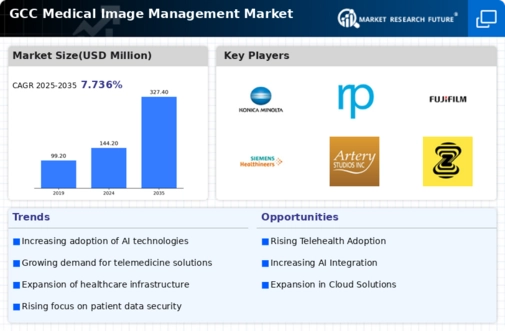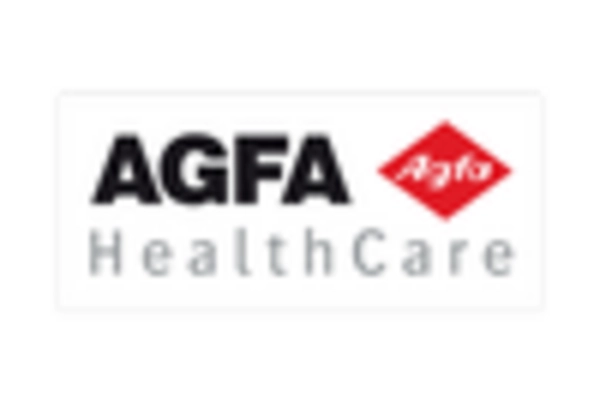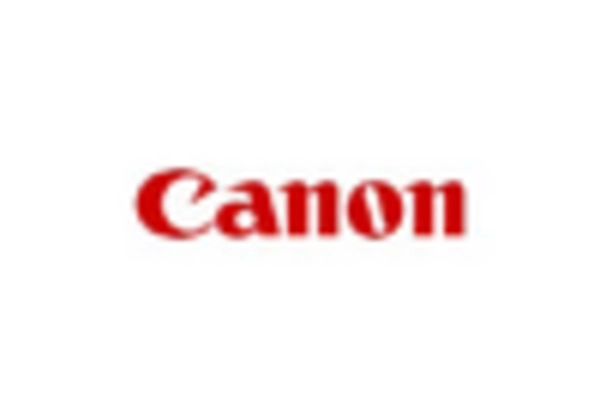Increased Healthcare Expenditure
increased healthcare expenditure in the GCC is benefiting the medical image-management market., as governments and private sectors invest heavily in healthcare infrastructure. This investment is aimed at improving healthcare delivery and patient care, which includes upgrading imaging facilities and adopting advanced image-management systems. According to recent reports, healthcare spending in the GCC is projected to exceed $100 billion by 2026. This financial commitment is likely to enhance the capabilities of medical imaging departments, thereby driving the demand for comprehensive image-management solutions that can handle large volumes of data efficiently.
Growing Focus on Patient-Centric Care
The medical image-management market is increasingly shaped by a growing focus on patient-centric care within the GCC healthcare systems. As healthcare providers prioritize patient outcomes and satisfaction, the need for efficient image management becomes critical. This shift encourages the adoption of systems that facilitate quick access to imaging data, enabling timely diagnoses and treatment plans. The emphasis on patient engagement and personalized care is likely to propel the market forward, as providers seek solutions that enhance the overall patient experience. Consequently, the medical image-management market must evolve to meet these changing expectations.
Rising Demand for Telemedicine Services
The medical image-management market is significantly influenced by the rising demand for telemedicine services across the GCC. As healthcare providers increasingly adopt remote consultation models, the need for efficient image-sharing and management systems becomes paramount. This trend is expected to drive the market, as healthcare facilities seek to enhance their telehealth capabilities. The market for telemedicine in the region is anticipated to reach approximately $1.5 billion by 2026, indicating a robust growth trajectory. Consequently, the medical image-management market must adapt to support the seamless integration of imaging data into telemedicine platforms, ensuring that healthcare professionals can access and interpret images remotely.
Regulatory Initiatives Promoting Innovation
The medical image-management market is positively impacted by regulatory initiatives aimed at promoting innovation in healthcare technologies within the GCC. Governments are increasingly recognizing the importance of advanced imaging solutions in improving healthcare delivery. Initiatives that streamline the approval process for new imaging technologies and promote research and development are likely to foster a more dynamic market environment. As a result, companies in the medical image-management market may find new opportunities for growth and collaboration, potentially leading to the introduction of cutting-edge solutions that enhance diagnostic capabilities and patient care.
Technological Advancements in Imaging Techniques
there is a surge in technological advancements in the medical image-management market., particularly in imaging techniques such as MRI, CT, and ultrasound. These innovations enhance diagnostic accuracy and efficiency, which is crucial for healthcare providers in the GCC. For instance, the introduction of high-resolution imaging systems has improved the visualization of complex conditions, leading to better patient outcomes. The market is projected to grow at a CAGR of approximately 8% from 2025 to 2030, driven by these advancements. Furthermore, the integration of advanced imaging modalities into existing healthcare infrastructures is likely to streamline workflows, thereby increasing the demand for sophisticated image-management solutions.

















Leave a Comment